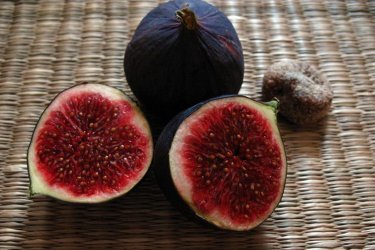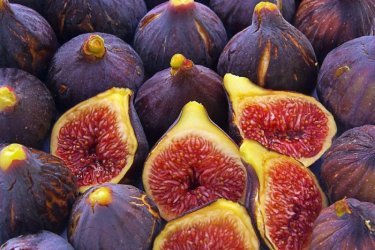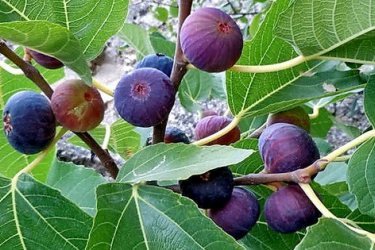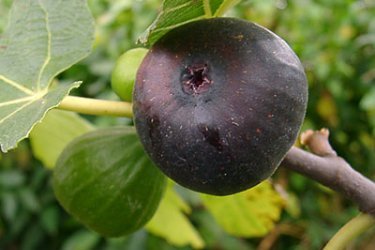Figs
According to its biological origin, figs belong to the Ficus genus and represent the Tutov family. It is considered the most ancient of cultivated plants, it is mentioned in the Bible, and, most likely, it was its fruit, and not the apple, that the legendary Eve and Adam tasted.
Different peoples have their own name for this plant, it is called:
- fig and fig
- wineberry and fig tree
- fig tree
Where can you grow figs?
In nature, the tree is found only in the subtropical zone, so it turns out that residents of the northern regions can only see it in pictures, and in order to enjoy the fruits, they will need to buy them in a store?
In fact, it is quite possible to keep many tropical fruits in an apartment, for example - growing figs at home This will allow you not only to admire the beautiful tree, but also to receive its tasty and very healthy fruits.
In addition, gardeners who admire the exotic can decorate their garden with these original plants, even if they live in areas where winters are not particularly mild.
Thanks to the work of breeders, cold-resistant varieties have appeared that allow the cultivation of figs in open ground.
As for fig varieties, it is better to give preference to self-pollinating ones:
- Pomorie
- Violet
- Kadote
- Black Crimean
Growing figs - what are the features of care?
In the articles in this section it is easy to find information about the characteristics of this plant:
- it is no different in its demands on conditions of detention
- Fruiting can begin in 2-3 years, and sometimes even in the year of planting, but provided that the seedling is obtained vegetatively
- Growing figs from seeds allows you to get a tree that will bear fruit in 7-9 years of life
Both the above-ground and root parts of the fig tree grow rapidly; in the first few years, the plant grown in a pot requires annual replanting.
Moreover, each subsequent container should have a volume of a whole liter larger than the previous one. But it is not recommended to use too large a container for planting - the tree will begin to fatten, this will greatly lengthen the waiting period for the first harvest.
The pot for the fig tree should be chosen wide - its roots tend to grow to the sides. Before filling the soil, a drainage layer must be laid at the bottom of the vessel; this can be expanded clay, broken brick, or pieces of charcoal.
The substrate should include:
- deciduous soil 1 part
- turf - 4 parts
- humus - 2 parts
- coarse river sand
Growing figs indoors involves transplanting, fertilizing with mineral fertilizers and organic matter. It is very important to know how to water figs correctly; over-moistening the soil in winter is unacceptable; in summer, on the contrary, much more moisture is required for the development of the plant.
During the period of fruit ripening, watering should be moderated, otherwise the berries will be watery and will partially lose their taste.
Growing in open ground
The articles in this section describe in detail how to grow figs in the country. Of course, in areas with harsh winters you will have to equip a shelter for the winter. To make the task easier, experts recommend planting trees at an angle of 45 degrees and forming the crown into a fan.
The shelter can be constructed from leaves and spruce branches, and protected from moisture on top with pieces of roofing material, slate, or tarpaulin. Winter-hardy varieties can withstand temperatures down to -30 C under cover.
The plant is moisture-loving; in summer it will require systematic watering. To reduce moisture loss, it is recommended to use mulching.
The growing season in open ground is too short; often the berries of the second ovary do not have time to ripen. They remain on the branches, and having successfully overwintered they can significantly supplement the next year’s harvest.
To prolong the growing season, you can install a polyethylene greenhouse above the tree; given the method of planting at 45 degrees, this is not at all difficult.
An important point of care, both in garden and indoor conditions, is correct pruning of figs, because proper crown formation contributes to better fruiting and ripening of a high-quality crop.
We wish you success in growing a fig tree in your apartment or in the garden, may it please you with delicious berries that can cure many serious diseases, and, according to Avicenna, prolong your youth.




